Evaluating the Impact of Shadow Coverage on Rooftop Solar Photovoltaic Systems and Optimizing Panel Placement
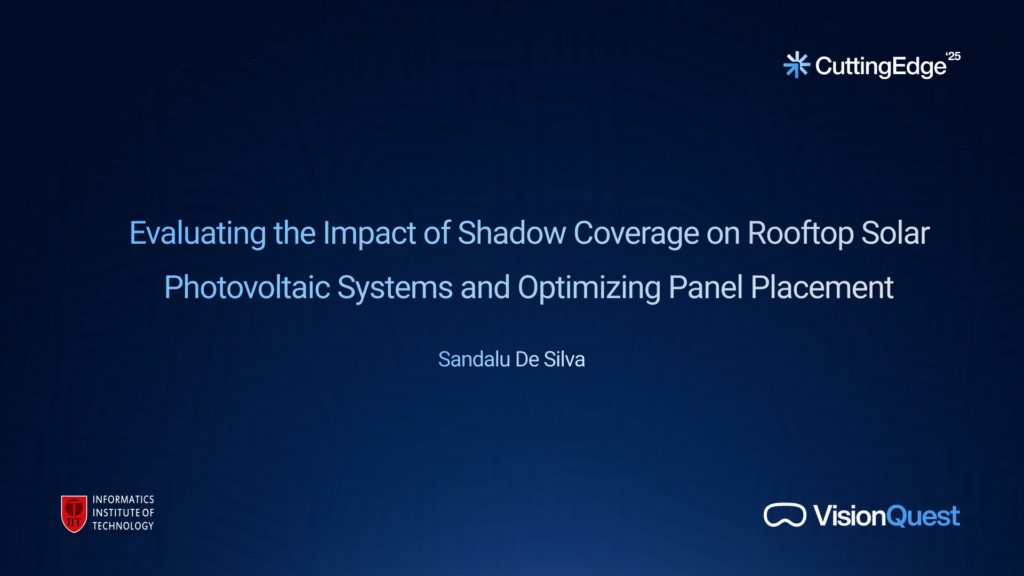
“This project, titled SolarSync, focuses on optimizing rooftop solar photovoltaic (PV) systems by addressing the critical issue of shadow coverage in urban environments. In densely populated areas, shadows from surrounding buildings and structures dynamically change throughout the day and seasons, significantly impacting solar panel efficiency. Traditional PV placement models typically use static data, ignoring these dynamic shadow variations and resulting in suboptimal energy generation.
To overcome this limitation, the project introduces a machine learning-powered system that leverages instance segmentation using the Mask R-CNN architecture for precise building and shadow detection. This is integrated with a dynamic shadow simulation model that estimates building heights and tracks sunlight exposure in real time using high-resolution satellite imagery. Together, these technologies enable accurate modeling of shadow behavior and allow for data-driven optimization of solar panel placement on rooftops.
The solution was evaluated using rigorous performance metrics, achieving high segmentation accuracy with an F1-Score of 0.8976 and Average Precision (AP) of 67.8% at an IoU threshold of 0.5. SolarSync sets a new standard in rooftop solar PV optimization by offering a scalable, globally adaptable tool that enhances the efficiency and sustainability of urban solar energy systems.”
A Continual Learning Mechanism for Early Brahmi Inscription Translation with Deep Learning

An automated system capable of recognizing and translating early Brahmi inscriptions from Sri Lanka into modern Sinhala by employing a CNN-based (YOLO) character recognition model and a transformer-based NMT model. A critical component of the system will be a continuous learning mechanism that allows the model to adapt incrementally as new inscriptions are discovered, thus avoiding the need for complete retraining with each new data point.
Research Article Relevancy Evaluation Automation System for Generative AI

The annual production of research articles is increasing rapidly. In the field of article review it is a crucial part of content validation and quality assurance. Traditionally, this process is manual, time-consuming, and often subject to human biases and inconsistencies. This Research Article Relevancy Evaluation Automation System for Generative AI aims to develop an AI-driven system that can evaluate relevancy on specific domain and review articles to provide relevancy score, feedback, and grammar checking.
B-Track: Preventing Post-Expiry Blood Wastage in Sri Lanka using Demand-Based Forecasting and Proactive Inventory Management

Post-expiry blood wastage presents a substantial global healthcare challenge. Blood is an essential and irreplaceable healthcare resource, used for surgeries, emergency care, and chronic illness management. Despite technological breakthroughs, blood cannot be artificially generated and must be donated by volunteer donors, whose availability is intrinsically unpredictable. This variable donor availability, along with the limited shelf life of blood, makes it an essential resource that must be carefully managed – amidst the fluctuating blood demand. However, inefficiencies in demand forecasting, inventory optimization, and communication continue to contribute to substantial discards of this life-saving resource.
To address these inefficiencies, the project B-Track introduces a data-driven solution using historical data (2020–2024) from Sri Lanka’s National Blood Transfusion Service, supplemented by expert interviews. The proposed solution is a multivariate Long Short-Term Memory (LSTM) Recurrent Neural Network (RNN) model integrated into a platform that supports proactive inventory management. By analyzing complex trends, B-Track provides more accurate demand forecasting, while enabling timely decision-making through automated near-expiry alerts and optimized redistribution mechanisms. This integrated system aligns blood collection with anticipated demand, minimizing expiry-related wastage.
Key findings demonstrate that the developed multivariate LSTM forecasting model achieved a demand prediction accuracy of 63.79%, outperforming both SARIMA (42.17%) and Univariate LSTM (50.21%) models. System testing further validated the effectiveness of real-time inventory tracking, alerts, and redistribution protocols. This research contributes a scalable model for enhancing blood bank sustainability by merging machine learning-driven forecasting with dynamic inventory optimization, paving the way for a more efficient and equitable blood supply chain.
End-to-End Sign Language Recognition Pipeline

“Sign Language Recognition (SLR) plays a crucial role in enhancing communication accessibility for deaf and hard-of-hearing communities. This paper introduces an energy-efficient, end-to-end SLR pipeline optimized for real-time edge deployment. Our approach
centers on a novel hybrid architecture that integrates MaskedConv1D layers with a Bidirectional Long Short-Term Memory (BiLSTM) network, further enhanced by an attention mechanism to effectively extract and leverage spatio-temporal features from sign gesture sequences. The pipeline incorporates a robust preprocessing module utilizing MediaPipe-based landmark extraction and a selective temporal sampling strategy, which together reduce input redundancy while preserving critical gesture dynamics. Additionally, a lightweight, prompt-driven language model is employed for on-the-fly grammatical correction and translation, ensuring high semantic fidelity under computational constraints. Experimental evaluations on the SSL400 dataset demonstrate competitive classification accuracy, low computational overhead, and high inference speed, making the system well-suited for resource-limited edge devices. These contributions provide a scalable foundation for practical SLR applications and highlight future enhancements in multimodal fusion and on-device language processing.”
AnoLNN – A Generalisable Approach for Explainable Video Anomaly Detection with Liquid Time-Constant Networks
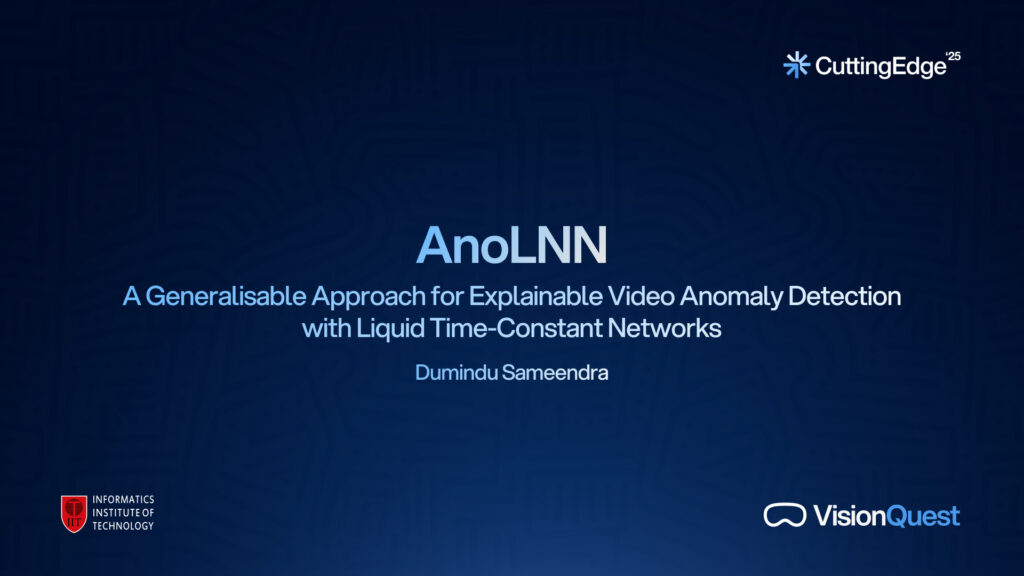
AnoLNN is a novel, generalisable, and explainable framework for Video Anomaly Detection, designed to address key challenges in the field such as limited generalisability, high computational costs, data imbalance, and lack of interpretability. The system integrates a hybrid architecture that combines Convolutional Neural Networks for spatial feature extraction with Liquid Time-Constant Networks for capturing dynamic temporal dependencies. The model learns from overlapping video sequences and employs a class-balanced focal loss function to handle the natural class imbalance common in VAD datasets. Anomalies are detected by evaluating the confidence of sequence-level predictions, using F1 score-based threshold optimisation. To enhance transparency and trust, the system integrates Grad-CAM and Integrated Gradients, enabling the identification of critical spatial and temporal features contributing to anomaly predictions. Evaluated on the UCF-Crime dataset, AnoLNN achieved strong performance with an AU-ROC of 0.9787 and PR-AUC of 0.9568 for Road Accidents, as well as an average AU-ROC of 0.9090 across multiple anomaly types. These results highlight its state-of-the-art performance and adaptability across diverse scenarios. The explainability features built into the system support its safe deployment in real-world applications such as surveillance and autonomous vehicles.
Developing a Low-Cost Air Pollution Monitoring System for Colombo
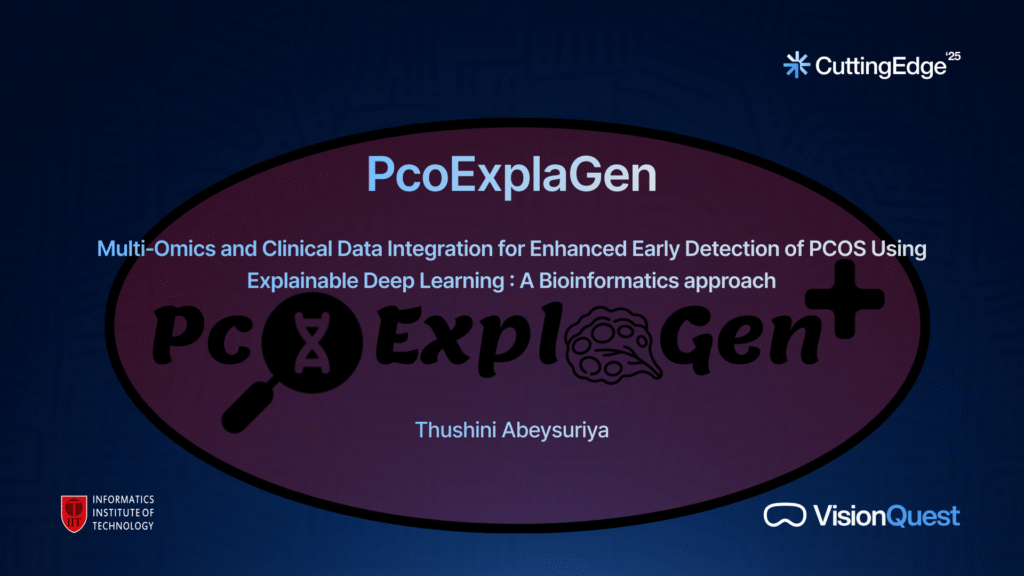
Air pollution poses a significant threat to public health, particularly in urban environments of
developing nations where monitoring infrastructure is often sparse or outdated. This thesis
presents the design and deployment of a low-cost, real-time air quality monitoring system for Colombo, Sri Lanka. Utilizing a suite of low-cost sensors ranging from particulate matter detectors (SDS011) to gas sensors (MQ and MiCS series), GPS modules, and environmental sensors (DHT22, BMP180) the system captures a wide array of environmental parameters including PM2.5, PM10, CO, NO₂, SO₂, temperature, humidity, and pressure. Data is collected via Raspberry Pi-based architecture and uploaded to Google BigQuery, where it undergoes statistical preprocessing and machine learning-based anomaly detection using Autoencoders, Gaussian Mixture Models, and Isolation Forests. Visualizations are delivered through interactive dashboards in Looker Studio, providing public access and decision-making support for authorities. The proposed system aims to bridge the gap between data scarcity and high spatial resolution needs in urban air monitoring. The results indicate that, when calibrated and combined with intelligent preprocessing, low-cost sensors can offer reliable environmental insights, thus supporting data-driven governance and community health awareness. The project adheres to strict ethical, legal, and data security
standards to ensure responsible deployment and use.
Multi‑Omics and Clinical Data Integration for Enhanced Early Detection of PCOS Using Explainable Deep Learning – A Bioinformatics Approach
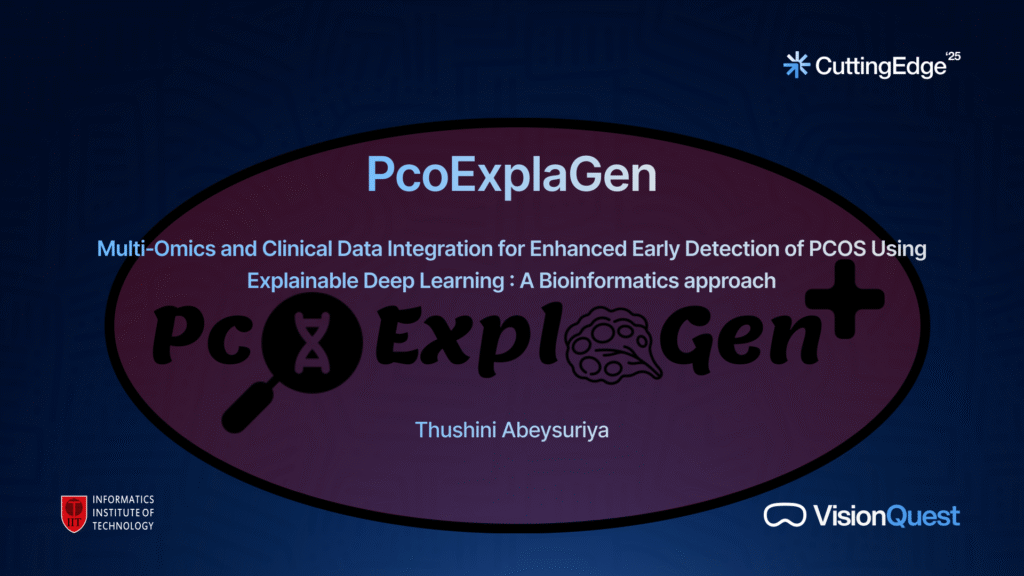
Polycystic Ovary Syndrome (PCOS) is a complex endocrine disorder affecting up to 10% of
women of reproductive age, with early detection remaining challenging due to its
heterogeneous presentation. Traditional diagnostic approaches relying solely on clinical
markers often miss subtle molecular indicators, while genomic analyses alone fail to
incorporate crucial clinical context, resulting in delayed diagnosis and suboptimal treatment
outcomes.
This project addresses these limitations through a novel multi-modal approach integrating
omics data (from GEO datasets including GSE5090, GSE54248, GSE54250) with clinical
biomarkers using a sophisticated architecture combining Graph Neural Networks (GNNs) and feed-forward networks. The implementation features separate processing pathways: omics data flows through GNN layers (GATConv/GCNConv) modeling gene-gene interactions, while clinical markers pass through conventional neural networks. These pathways converge in a fusion mechanism with adaptive weighting based on clinical indicators like AMH levels.
Domain adaptation techniques mitigate batch effects across datasets, while transfer learning leverages pre-trained encoders to improve generalizability.
Comprehensive evaluation demonstrates the system’s effectiveness with a cross-validated mean AUC of 0.653 (±0.116). Refined threshold tuning yields a precision of 0.975, recall of 0.870, and classification accuracy up to 95%. The integration of explainable AI tools provides transparent visualization of feature importance, showing that AMH levels, β-HCG
measurements, and their derived ratios consistently emerge as critical predictors. This approach not only enhances diagnostic accuracy but also provides actionable insights into the molecular mechanisms underlying PCOS.
Tea-Intel: Data Driven Insights for Ceylon Tea
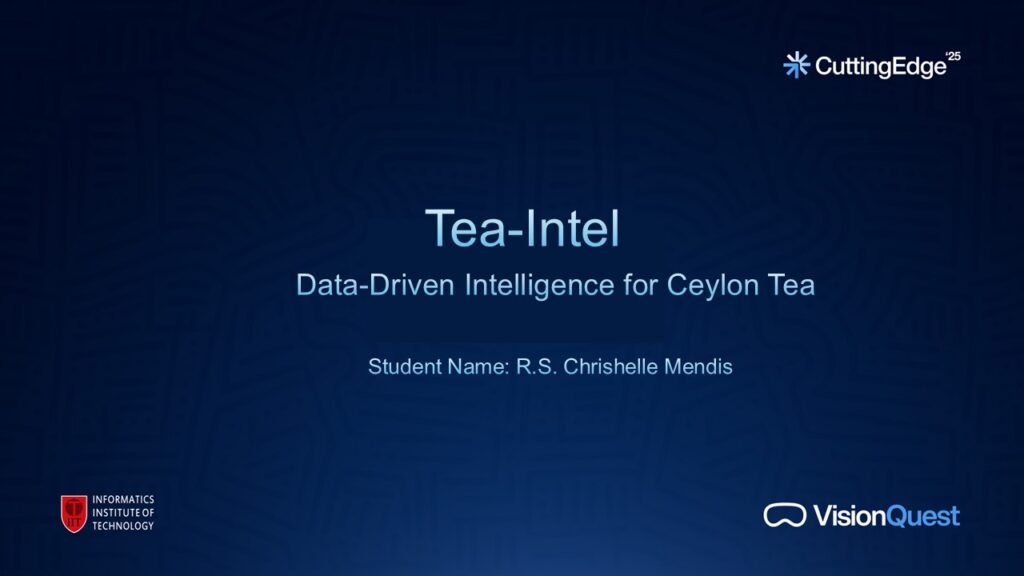
Tea-Intel is a data-driven decision support solution designed for Sri Lanka’s tea industry. It integrates two complementary clustering models — multivariate time series clustering for tea grades and feature-based clustering for factories — to uncover hidden behavioral patterns in auction data. These results are visualized through an interactive dashboard, enabling industry stakeholders to benchmark performance, monitor volatility, and make strategic, evidence-based decisions. Tea-Intel aims to modernize auction analysis, improve transparency, and support long-term sustainability in the tea sector
Comparative Need State Analysis for Ride-Hailing Platforms: A Case Study on PickMe and Uber in Colombo, Sri Lanka
This project investigates the evolving ride-hailing landscape in Sri Lanka by conducting a comparative need state analysis of Uber and PickMe customers in Colombo. The research addresses a critical gap in understanding localized customer needs in ride-hailing, which is essential for designing data-driven engagement strategies. Using an unsupervised clustering approach, the study segments 384 ride-hailing users based on categorical behavioural and demographic attributes collected through a bilingual survey.
The K-Modes clustering algorithm was employed to identify four distinct customer personas: (1) Flexible Weekly Dual-App Users, (2) PickMe-Focused, Low-Frequency Cash Users, (3) Occasional Price-Sensitive Uber Users, and (4) Loyal Female Dominant Daily Riders with Subscriptions. The model’s performance was validated using several techniques, confirming four as the optimal number of clusters.
These insights were visualized using an interactive Microsoft Power BI dashboard,
allowing stakeholders to filter, compare, and explore behavioural trends across user groups. Key findings revealed that price sensitivity, app-switching behaviour, subscription adoption, and ride purpose vary widely across clusters. Actionable business recommendations were formulated for both PickMe and Uber to tailor engagement, pricing, and service quality improvements accordingly.
The study contributes methodologically by demonstrating the application of K-Modes in an industry setting and practically by providing local ride-hailing providers with insights for a segmentation-driven strategy. The project also sets a precedent for future research in mobility data analytics within developing urban contexts.
Keywords: clustering, customer segmentation, K-Modes, ride-hailing, user behaviour
